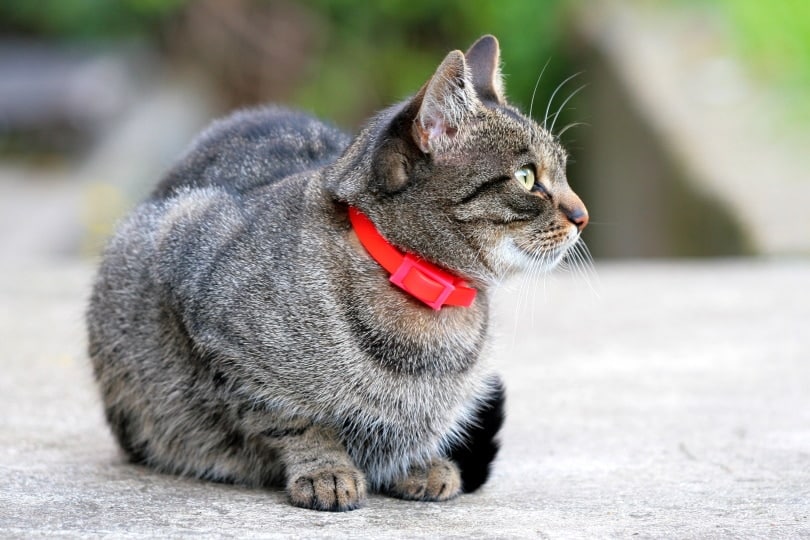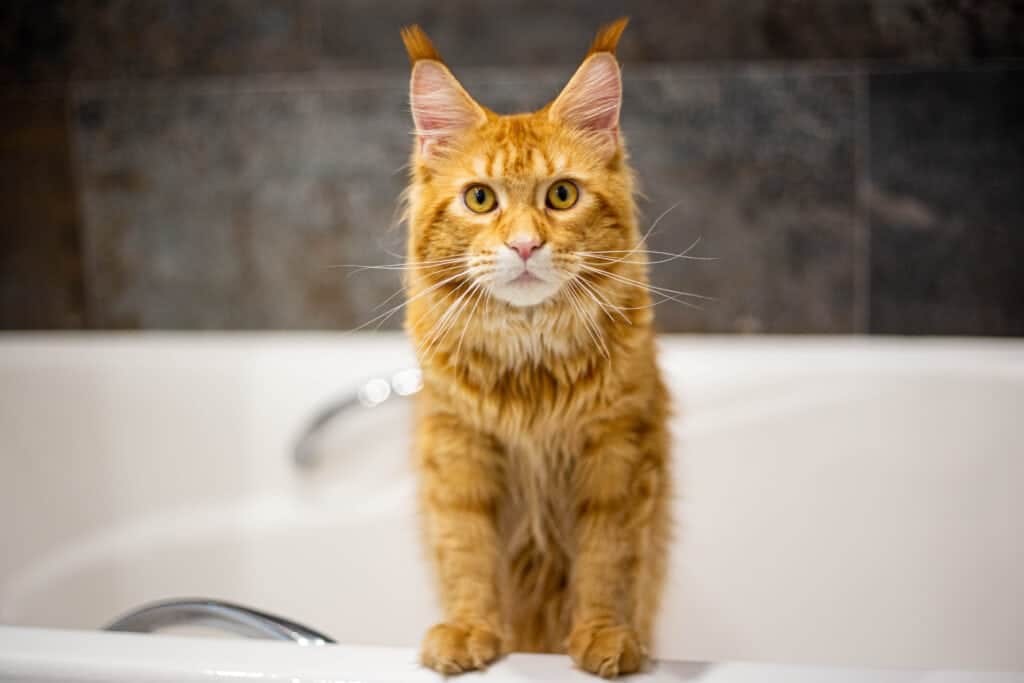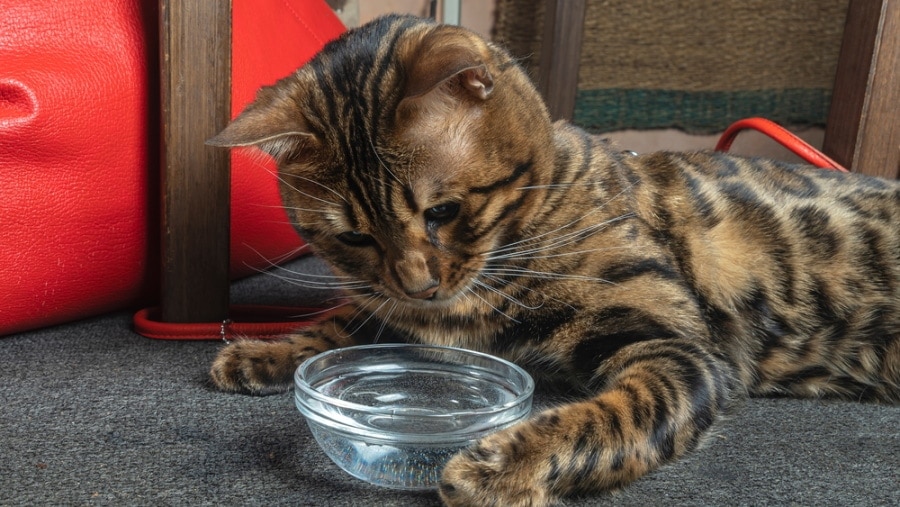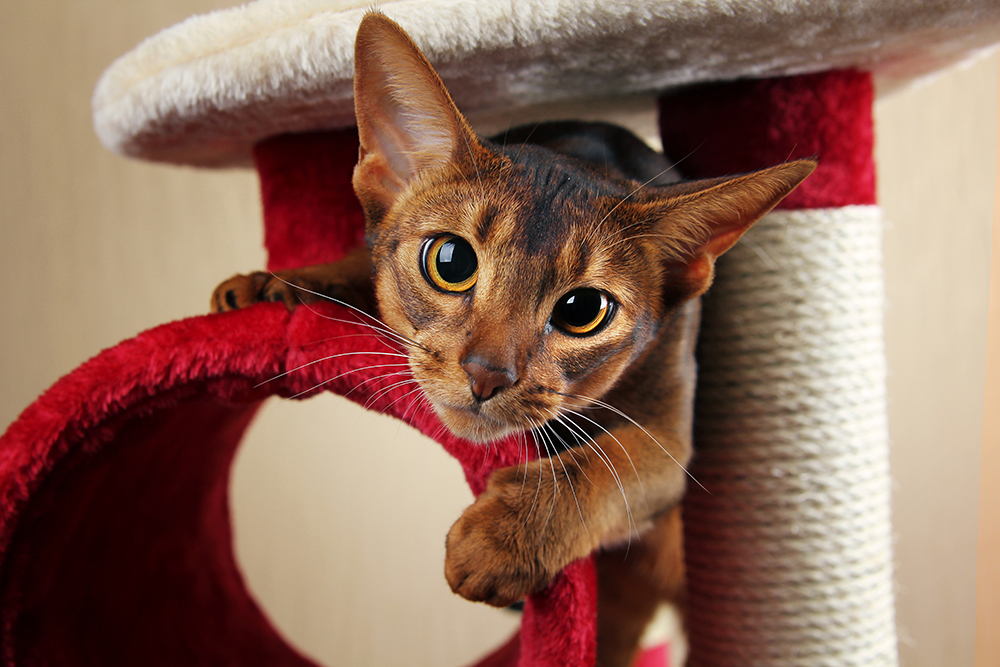Click to Skip Ahead
Whether a breakaway or traditional product, keeping a collar on a cat can be quite a task for every pet owner. While most people associate collars with dogs, it’s also a good idea for your cat to wear one if they go outdoors since you have no place to put a tag without one.
If you have a collar with a tag containing your information, you have a much better chance of your cat being returned if it should wander off from home and can’t find its way back.
However, even though you know you should keep a collar on your cat, sometimes it’s a task that’s easier said than done. In this article, we’ll give you a few tips and tricks for keeping a collar on your cat and a little bit more.

The 5 Tips to Keep a Collar on a Cat
1. Start with a Relaxed, Happy Cat
Once you know your cat is relaxed and happy, put the collar on the floor in front of your feline. Let the cat investigate and play with the collar as long as it wants to.
It’s important to start when your cat isn’t stressed because if you put the collar on it when it’s overexcited or anxious, you won’t have good results. The cat might start associating the collar with being stressed, and you’ll never get it to wear one.

2. Use an ID Tube
Many cat owners say that the tags on the breakaway collars cause their cats to be able to remove the collar easily. One way to avoid this is to use an ID tube instead. You can easily order the ID tube, and it’s pretty simple to attach to your cat’s collar, which will help to keep your cat from breaking or opening the clasp.
Of course, this is no guarantee, as cats are known to be Houdini’s and might find a way to get the collar off anyway.
3. Opt for a Stretch Collar Instead
It is possible that a normal collar feels uncomfortable on your cat. A stretch collar might be easier to wear while keeping your pet safe by letting them escape should something happen.
Cats are curious creatures and climb any and everything they can find. The stretch collar is flexible enough to come off your cat should they get hung up somewhere and need to escape. The only drawback to a stretch collar is that some cats find it easy to take off.
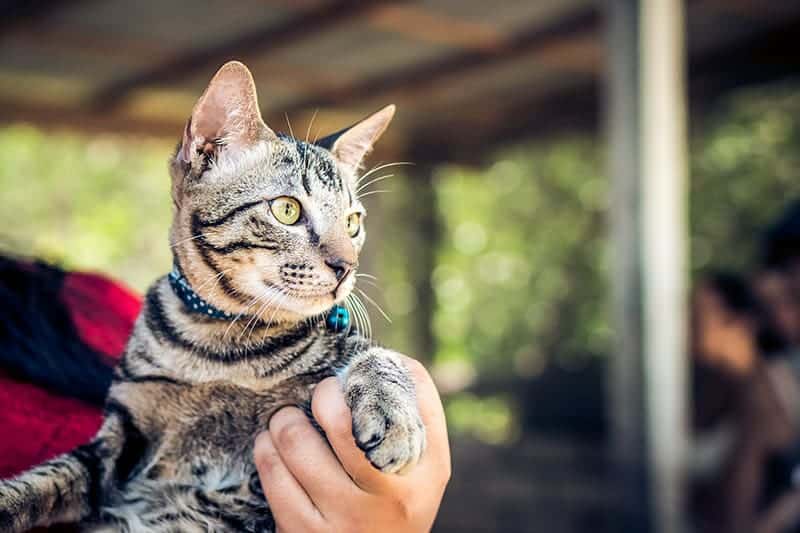
4. Train Your Cat as a Kitten
If you have recently adopted a kitten, the best way to keep the cat from taking off its collar as it ages is to train the kitten to wear the collar when it’s young. You can do this through a rewards system, giving the kitten a treat when it keeps the collar on instead of trying to take it off.
Remember, as with anything else you try to train an animal to do, training a cat to keep a collar on will take determination, patience, and a lot of love.
5. Consider Microchipping Instead
While you may have already microchipped your cat, if you haven’t, it might be the best way to ensure you can find your cat if something happens. This way, you don’t have to depend on a collar and tag to bring your lost feline home if it should become lost.
There are many benefits to microchipping and if your cat will not keep on a collar, this might be the best and only option for you.
These are just a few tips and tricks for keeping a collar on your feline companion. Sometimes, these tips will work, and sometimes cats refuse to keep the collar on, and chipping the cat is your best option. You can also consult your vet for recommendations on how to keep a collar on your cat.
If you need to speak with a vet but can't get to one, head over to PangoVet. It's an online service where you can talk to a vet online and get the advice you need for your pet — all at an affordable price!

Should You Put a Collar on Your Cat?
There is much debate on whether you should or shouldn’t put a collar on your cat. We’ll give you a few pros and cons below to help you decide.
- Helps to identify your cat
- Can be used as a parasite control measure
- You can attach a bell to reduce wildlife predation
- Could compromise the cat’s safety
- Could get lost making your pet unidentifiable
- The collar could fit poorly
Whether you believe in putting collars on cats or not, finding some way to keep your cat safe when it goes outside is essential. Whether you decide to microchip your cat and put a collar on them, you need the peace of mind of knowing that your cat will be returned home if it gets lost.

Conclusion
While you might not have ever heard of putting a collar on a cat, especially since they don’t like them, it’s probably a good idea if your cat is prone to running out the door or is allowed to go outside.
A collar will allow you to put a tag on your cat, so if it’s lost, it can be returned home. Hopefully, these tips and tricks will help you keep the collar on your cat so that you can easily protect your pet from harm.
Featured Image Credit: Daniel-Rajszczak-Shutterstok

